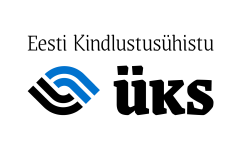Life shows that the supernatural expectations attributed to the coming of the euro were left unfulfilled. The new currency left the buyers and sellers eyeing each other and waiting for the actual market movements. For this reason the number of transactions dropped like a stone during the first months of the year and the prices were left almost unchanged.
By March one could already say that the market’s former rhythm is recovering and the number of transactions is stabilizing. The macro-scale picture is still not overwhelmingly joyous, but the trends are mainly positive.
- The number of unemployed is dropping. By Quarter IV of 2010, Estonia had 93 200 unemployed persons which is more than 13 000 below last year’s number. The number of employed people is also moving in a positive direction and grew by 12 000 compared to last year.
- Salary started increasing. The average salary in the last quarter of 2010 was 814 €. The annual salary rise was 3.9%. However, the average salary is still below, for example, the last quarter of 2008 when it was 838 €.
- Construction volume has dropped two times compared to the historical high. The construction volume in Quarter IV of 2010 was 528 million euros. Compared to the historical construction volume high in Quarter III of 2007, the drop has been more than twofold.
- Capital asset investments are dropping. In Quarter IV of 2010, the capital asset investments for procuring real estate and for construction were 174 million euros. A year ago the volume of these investments was 207 million euros.
- Euribor is rising, the interest rate isn’t yet. Of the housing loan interest rates, the kroon loan interest rate is now history. The interest rate for housing loans based on euro was 3.4% in Quarter 1 of 2011, basically the same scale where it has been in the last 18 months. Even the rising Euribor has not increased the interest rate, though unfortunately this is unlikely to last forever.
- Loan balance is going down, loan turnover stays on the level of last year. The balance of housing loans, ie. the total volume of issued loans, is still dropping. As of Quarter I of 2011, the housing loan balance is 5.9 billion euros. The loan turnover in this year’s Quarter I was 85 million euros, 2% more than last year when new housing loans were issued to the amount of 83 million euros.
- Commercial loan drop is even steeper. The balance of loans to enterprises, ie. the volume of loans to be repaid, dropped by 9% in a year. In other words, Estonian companies can get significantly less new loans from banks compared to the old loans that have to be paid back. The loan turnover, ie. the volume of new issued loans, in Quarter I of 2011 was 330 million euros – a whopping 41% less than the first quarter of last year.
- Less new residential spaces. In Quarter I of 2011, usage permits were issued to 366 new residential spaces with the total are of 41.7 thousand square meters. Compared to last year, the number of new residential spaces dropped by 45 units and the area by 35%.
- Less new non-residential spaces added compared to last year. In Quarter I of this year, usage permits were issued to 143 new non-residential spaces with the total area of 71.6 thousand square meters. As with residential spaces, this figure is also in decline. For example, in Quarter IV of 2007, usage permits were issued to over 300 000 m² of non-residential areas. Thus the decline from the historical high is more than fourfold.
- The number of real estate transactions dropped slightly. In Quarter I of 2011, 8238 real estate transactions, 2% less than last year, were made in Estonia. However, the market was dominated by an expectation of an increase in the number of transactions which is why the decline caught many off-guard and therefore rather painfully.
The local background system for the real estate market is moving in a positive direction. There are fewer unemployed and more employed people, salaries are no longer dropping. Banks have started loan campaigns, as if expressing a wish to turn the trend that has been moving horizontally for years at least a little upward.
However, the sky above the real estate market is not free of clouds. In 2011, the loan market will be significantly influenced by Euribor the rise of which is doubted by only a few. The rise of Euribor has been balanced thus far by the reduction of the loan risk margin, though. One cannot also ignore the threats dominating the global economy.
Tõnu Toompark
Adaur Grupp OÜ
www.adaur.ee
















